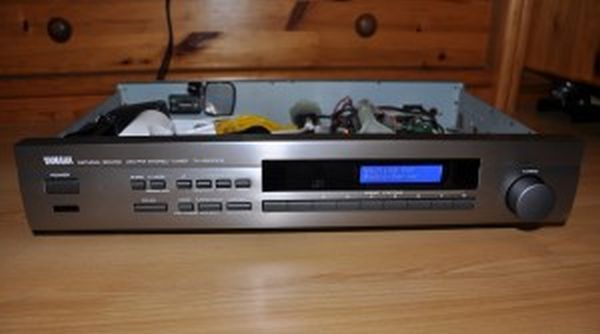Today I want to present you one of my larger craft projects. This time it is not just about software, but also about the associated hardware. What is it? A web radio!
I like to listen to internet radio stations, but I didn’t want to run my pc only for listening to webradios. Connecting my phone to my stereo either wasn’t a solution, since I’d rather wear this with me, because I don’t want to run for each SMS / Whatsapp message to the music system. And because I always like to tinker, it was obvious to build a web radio as a standalone device myself.
As this article has become a bit longer, there is a brief overview of the following sections of the article, so that everyone can quickly find what he looks for.
- What is the RadioduinoWRT?
- Considerations before building
- What should be the functions of the radio?
- Overview and parts list
- Configuration of the TL-WR703N
- The part around the Arduino
- The webinterface
- RadioduinoWRT on GitHub
- Photos of the radio
- Conclusion
2. Considerations before building
Once the basic idea to build a web radio myself was fixed, I thought about the components to be installed. So initially I also included a Raspberry Pi to discussion. Finally, I have decided on a combination of the TP-Link WR703N router (about which I have already reported several times in my blog) and an Arduino Mega.
This decision had several reasons – first, I had both the router and the Arduino still in my parts box and on the other I wanted to implement the project as cheap as possible and on minimal hardware. Certainly a realization with a Raspberry Pi would have been possible, but this would have been more expensive than the TL-WR703N and the Arduino Mega together. Furthermore the hardware of the Raspberry is almost “oversized” for the project requirements.
3. What should be the functions of the radio?
Also in the beginning of the project I have worked out a list of functionalities that should be supported by the finished radio.
- Listening to internet radio streams
- Running without PC / standalone device
- Internet access over WiFi
- RCA output (for my amp)
- 16×2 LCD for displaying information
- Physical accessable menu
- Handling the device “with your fingers” must be possible
- Operation should be possible via optional IR remote control
- Web interface to control the radio from a PC or smartphone
For more detail: RadioduinoWRT – a do it yourself webradio

